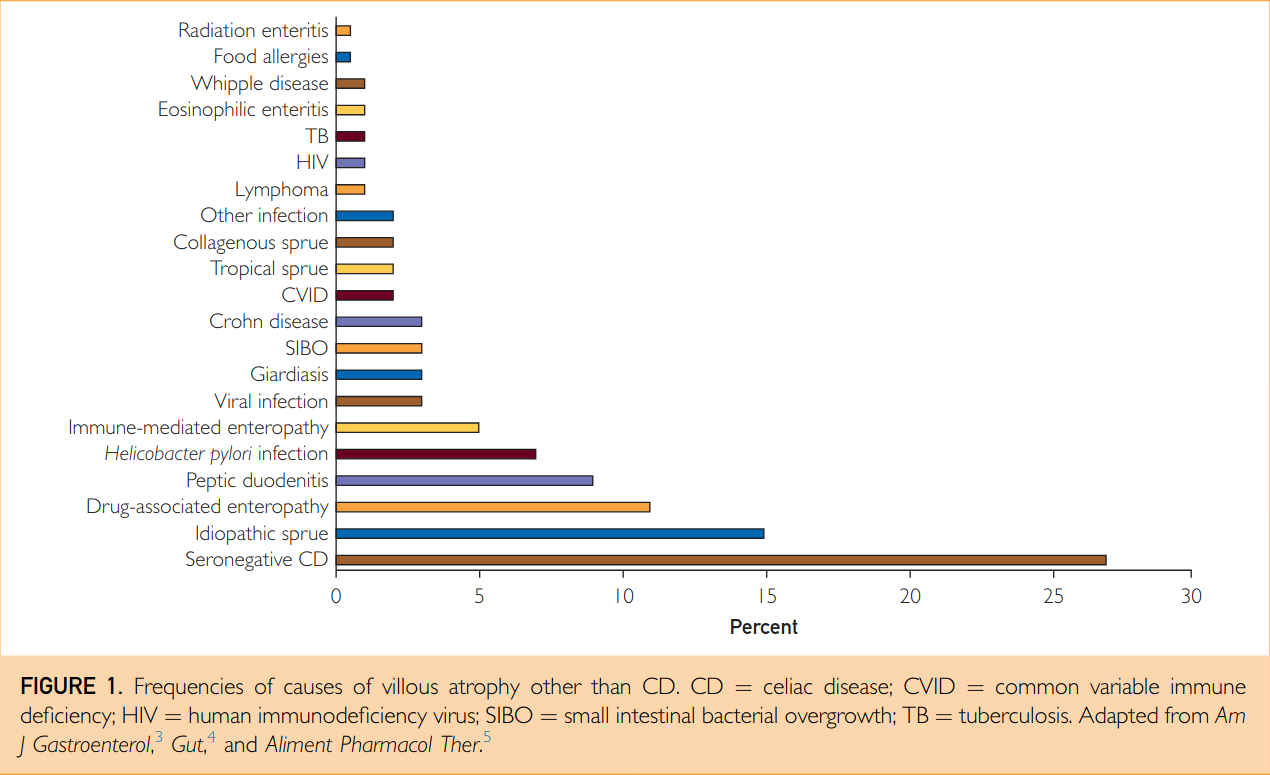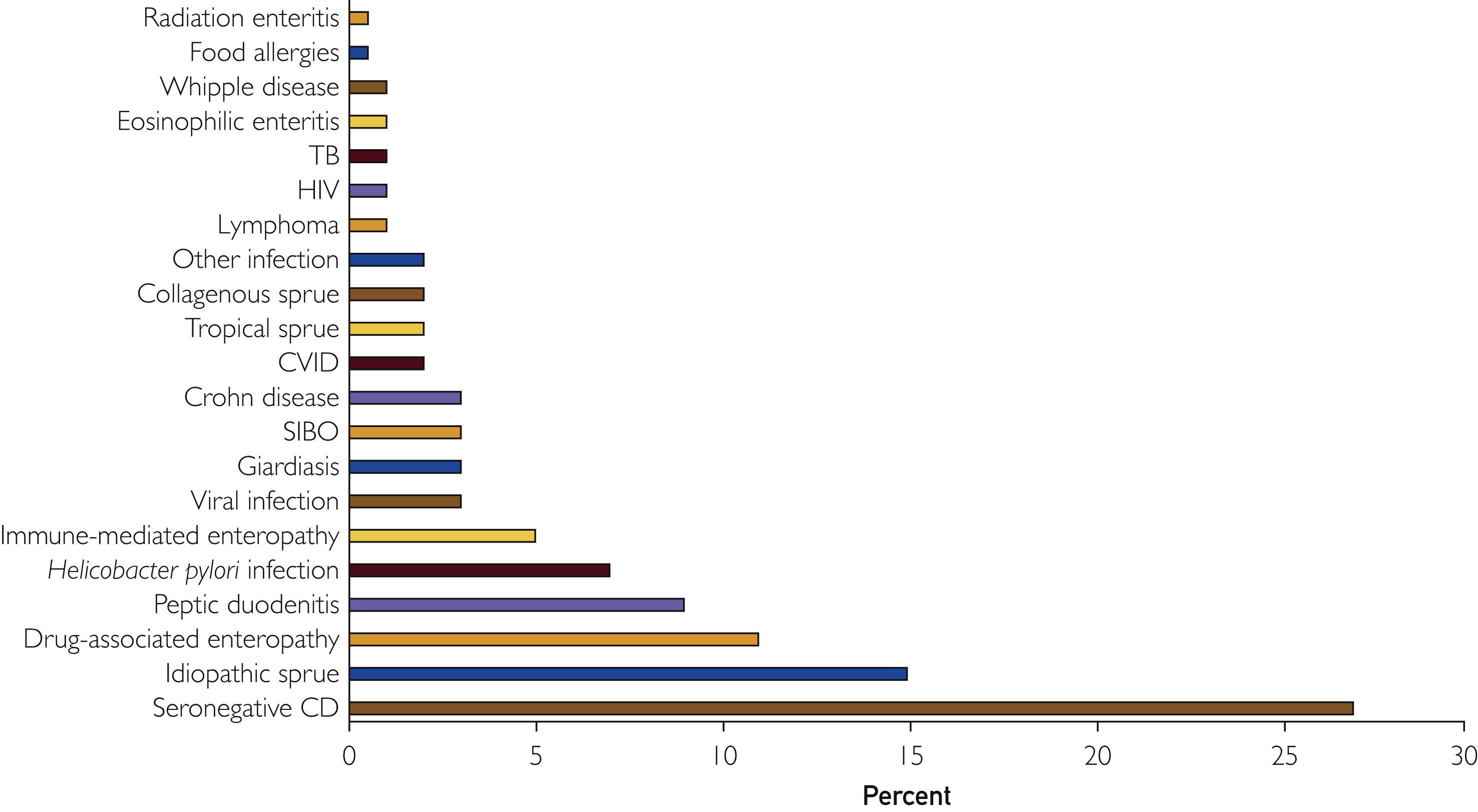
Russ H
Moderators-
Posts
440 -
Joined
-
Last visited
-
Days Won
8
Content Type
Profiles
Forums
Events
Blogs
Latest Celiac Disease News & Research:
Everything posted by Russ H
-
Shingles - Could It Be Related to Gluten/ Celiac
Russ H replied to Ginger38's topic in Related Issues & Disorders
I hope you are on the mend soon. About 1 in 5 people who contracted chicken pox as a child go on to develop shingles in later life - it is not uncommon. There are 5 known members of the herpes virus family including chicken pox that commonly infect humans, and they all cause lifelong infections. The exact cause of viral reactivation as in the case of shingles... -
Study Estimates the Costs of Delayed Celiac Disease Diagnosis (+Video)
Russ H commented on Scott Adams's article in Latest Research
This is the test KelleyJo is referring to: Blood-Based T-Cell Diagnosis of Celiac Disease- 8 comments
-
- burden
- celiac disease
-
(and 7 more)
Tagged with:
-
There were some interesting talks, particularly Prof Ludvig Stollid's talk on therapeutics for coeliac disease. https://www.youtube.com/playlist?list=PLRcl2mPE0WdigRtJPvylUJbkCx263KF_t
-
Guinness, can you drink it?
Russ H replied to Butch68's topic in Gluten-Free Foods, Products, Shopping & Medications
There are several blogs where people test different beers using commercially available gluten testing kits. Guinness definitely tests positive for gluten. Something to be mindful of is that in some regions, foodstuffs containing less than 20 ppm gluten can be sold as 'gluten free'. However, due to the volume involved, a UK pint of beer at 19 ppm would contain... -
This treatment looks promising. Its aim is to provoke immune tolerance of gluten, possibly curing the disease. It passed the phase 2 trial with flying colours, and I came across a post on Reddit by one of the study volunteers. Apparently, the results were good enough that the company is applying for fast track approval. Anokion Announces Positive Symptom...
-
Gluten-Free Food Ingredients That Can Trigger Celiac Disease and IBS-like Symptoms
Russ H commented on Scott Adams's article in Autumn 2025 Issue
I hadn't heard of patatin before. Apparently, it is similar in structure to and cross-reactive with latex. People who react to latex may also react to chitinase, which is found in many vegetables as a defence mechanism against invertebrate pests. Maybe this is what you are reacting to. Chitinase is found in many plants including wheat and maize. https...- 25 comments
-
- additives
- celiac disease
- (and 8 more)
-
Blood results
Russ H replied to Heatherisle's topic in Celiac Disease Pre-Diagnosis, Testing & Symptoms
The EMA test is an old and less sensitive test for anti-tTG2 antibodies. It relies on a technician using a microscope to check for fluorescence of a labelled substrate (typically monkey oesophagus or human umbilicus), giving a simple positive/negative result. It is similar to running a standard anti-tTG2 test but with a high cut-off, making it more specific... -
Can You Develop Celiac Disease Later in Life? Adult-Onset Symptoms (+Video)
Russ H commented on Scott Adams's article in Autumn 2025 Issue
Data from NHS England shows that most people are diagnosed between the ages of 40 and 60, with the mean age of diagnosis 45. For those diagnosed later in life, I wonder at what age the condition actually begins? Blood screening suggests that most people with the condition are not diagnosed, and that is likely because they have no symptoms or because...- 50 comments
-
- adult
- adult onset
-
(and 7 more)
Tagged with:
-
Yes, that seems to be the gist. Quantifying residues in fermented foods and drinks seems to be difficult. There are no tests for total gluten, just immunoassays, which generally detect a single epitope. There are estimated to be approximately 50 sequences that evoke a T-cell response of which nearly half are unknown and have no test. Gluten fragments...
-
Rather than create a new thread, I thought I would post to this one as it is on topic. The paper linked below is quite comprehensive regarding the state of knowledge of the safety of hydrolysed barley gluten. The final section gives a good summary. Barley based gluten free beer – A blessing or an uncontrollable risk?
-
Blood results
Russ H replied to Heatherisle's topic in Celiac Disease Pre-Diagnosis, Testing & Symptoms
That is more than 10x the standard range, so a strong positive. In the UK for children and adults under the age of 55, at least 10x the standard range is sufficient to be diagnosed without having an endoscopy. The NICE guidelines are are different for children in that a referral to a gastroenterologist is also recommended for diagnosis. https://www.coeliac... -
Blood results
Russ H replied to Heatherisle's topic in Celiac Disease Pre-Diagnosis, Testing & Symptoms
Do you know what the lab's standard range is for the IgA tTG2 result? The Endomysial IgA basically tests for the same antibodies as IgA tTG2 but it uses an older, less sensitive method and the result is positive/negative rather than quantitative. Hence, it is possible to show raised IgA tTG2 antibodies without getting a positive test for Endomysial IgA antibodies... -
There is information regarding this here: https://www.coeliac.org.uk/information-and-support/coeliac-disease/once-diagnosed/prescriptions/
- 11 comments
-
- brain damage
- brain fog
- (and 8 more)
-
Although sensitivity to gluten varies between individuals, multiple research studies suggest that consuming up to 10 mg of gluten a day is safe for most people with coeliac disease. Wheat flour contains approximately 10% gluten by weight, so this is equivalent to 100 mg of flour, or a piece of wheat bread the size of a small pea. There is a case report of...
-
Confused about my results
Russ H replied to AllyJR's topic in Celiac Disease Pre-Diagnosis, Testing & Symptoms
There is a predictive model for children on this link. Depends on sex, HLA genes and number of affected close relatives. The model only goes up to age 12 so it would be interesting to know what the lifetime risk is. https://hputter.shinyapps.io/preventcd/ -
The problem with a a multiple screening test like this is that it is likely to generate at least one result that is outside the normal range in a healthy person leading to futile investigations. The pathogenesis of dermatitis herpetiformis makes it unlikely that someone would have raised IgA-tTG3 but not raised IgA-tTG2. Suspected dermatitis herpetiformis...
-
Confused about my results
Russ H replied to AllyJR's topic in Celiac Disease Pre-Diagnosis, Testing & Symptoms
There is a good paper here on causes of seronegative villous blunting. The most common is seronegative coeliac disease. Not All That Flattens Villi Is Celiac Disease: A Review of Enteropathies -
Confused about my results
Russ H replied to AllyJR's topic in Celiac Disease Pre-Diagnosis, Testing & Symptoms
Sorry but I have to dash for an appointment so little time just now. Your signs and symptoms and response to a gluten-free diet sound like seronegative coeliac disease. Seronegative coeliac disease, Coeliac UK. -
ohmichael, do you know that you've reacted to gluten? We all get ups and downs in health - a mild viral infection one week and maybe an unset stomach another time. It is easy to ascribe the symptoms to gluten exposure even when that is not the cause of the symptoms. I would wait and see if it happens again before giving up your job, especially if you don...
-
Does Celiac disease affect blood pressure?
Russ H replied to Dorothy O.'s topic in Related Issues & Disorders
People with coeliac disease tend to have lower systolic blood pressure. However symptoms vary greatly between people and there are multiple cases in the literature of hypertension in people diagnosed with coeliac disease that gradually reverses on a strict gluten-free diet. -
There is not enough information to assess the likelihood of coeliac disease. You'll have to chase this up with the quack. The lab should provide antibody titres and a reference range. They might just have done an EMA test, which is negative/positive and antiquated - a proper IgA-ttG2 test would be more helpful.


